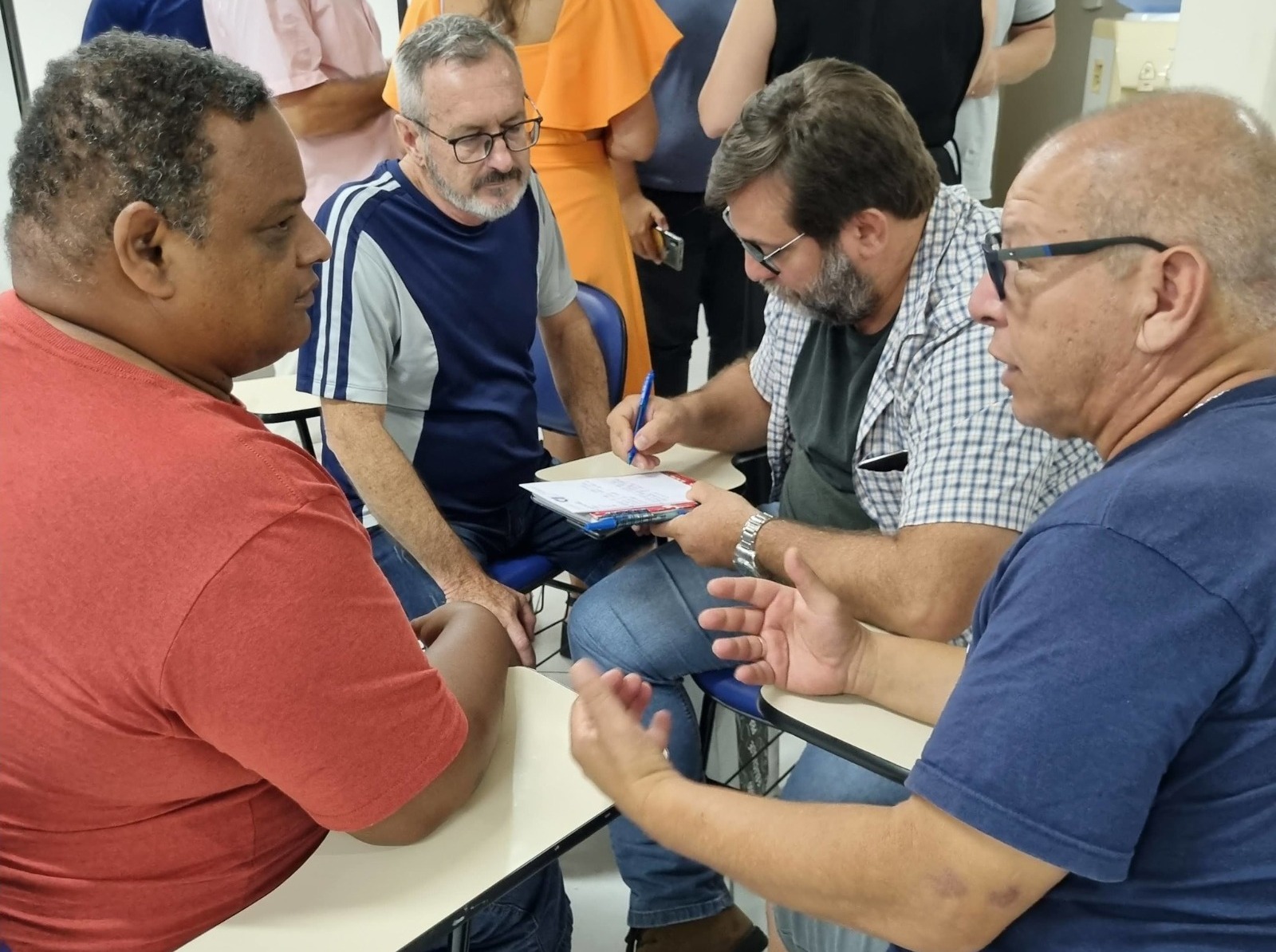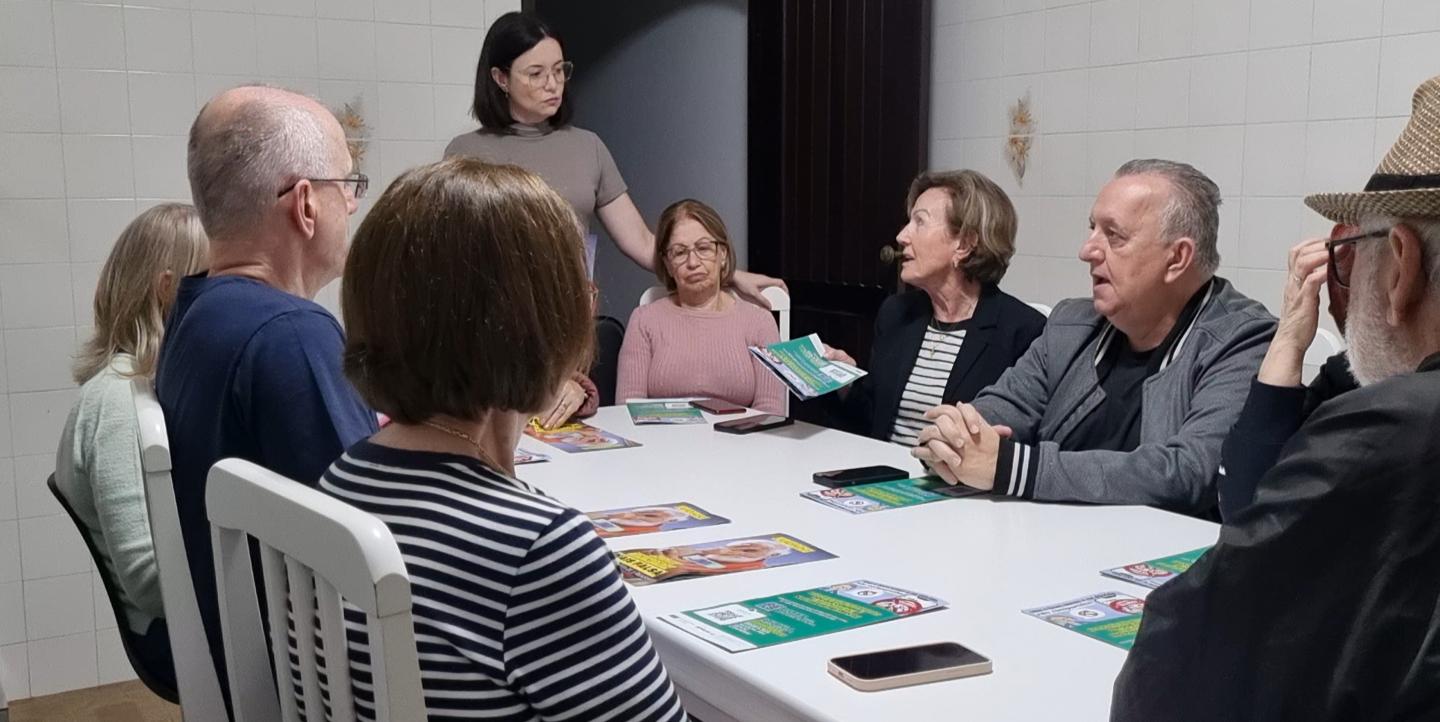The International Center for Journalists’ (ICFJ) Disarming Disinformation initiative is a three-year programme, supported by the Scripps Howard Foundation, that aims to slow the spread of disinformation through multiple programmes such as investigative journalism, capacity building and media literacy education. ICFJ partnered with MediaWise from the Poynter Institute to develop and deliver media literacy programming.
The media literacy training of trainers programme accepted global participants for two different cohorts. The participants are community leaders who will educate others on the importance of media literacy and how to apply those skills in real life. The article below is one of five impact stories selected from the second cohort. The programme thus far has trained 27 trainers who have reached more than 3,200 people.
The most sophisticated media literacy tools in the world are worthless if they don't meet people where they are.
Southern Brazil journalist Talita Rosa first encountered the phrase “fake news” in 2017, years before it entered everyday Brazilian conversation. That online course sparked her interest in fact-checking and later led her to launch "Prova Real," a pioneering verification project for the region.
As a communications professional, Rosa quickly realised that countering mis- and disinformation would take more than just journalists; it demanded a fundamental shift in how communities understand and share information.
Fast-forward to 2024. Rosa was sitting in her community’s municipal council, asking for support to teach elderly residents how to verify what they see online. She did not want to teach the complex fact-checking techniques favoured by media experts, but something far more practical: how to use the artificial intelligence tool built right into WhatsApp, where many of these residents actually consumed and shared news.
Her revolutionary insight? Meet people where they are with tools they can use.
From that first online course in 2017, Rosa delved into the fact-checking world, consuming content and courses, including Poynter’s training resources. So when she learned about the International Center for Journalists’ Disarming Disinformation Training of Trainers initiative, which featured media literacy training from Poynter’s MediaWise, she applied immediately.
During the training, Rosa expanded her knowledge of media literacy tools and techniques. But one lesson stuck: Training planning should be based on the audience's needs, and not just the trainer’s convictions as educators.
“The exchange of experiences broadened my understanding of the realities and perspectives of other contexts, contributing to a more global perspective on combating disinformation,” she said. “This was especially relevant in countries in the global south, where local peculiarities (such as low educational levels, limited internet access, etc.) require specific strategies that are sensitive to the realities of each community.”
After completing the programme, Rosa returned home to develop her own training plan, focusing on three core questions: Where to start? Who to train? How to reach them?
First things first
As Rosa participated in the MediaWise workshops, she thought about who she wanted to reach. Thinking back on her more than 18 years as a reporter, she had met people from all walks of life. But even within the same neighbourhoods, their access to and understanding of information varied widely.
Her own elderly family members had started to reach out to her to confirm news they received via messaging or social media. That background — combined with the knowledge that seniors in southern Brazil are economically, socially and culturally active — helped her realise that the community is digitally engaged but vulnerable.
To reach them, Rosa knew she would need the support of community leaders. She turned to the Municipal Council for the Rights of the Elderly, which unanimously supported her idea. The pieces soon fell into place. She partnered with senior organisations eager to host workshops and scheduled eight sessions that reached more than 150 participants — people who would otherwise not have had this learning opportunity.
Workshop prep
Before the first session, Rosa visited each community and distributed a brief questionnaire to gauge participants’ skills and concerns. This information helped her tailor the content to the group's context and needs.
She began every workshop with an awareness-raising stage. They discussed everyday situations in which people may be deceived: retirement, financial scams, health misinformation. From there, she connected those examples to their daily media habits, showing that deception can occur anywhere, about any topic.
To make the concept concrete, Rosa compared spotting reliable news to recognising authentic banknotes. She explained the clues to look for when distinguishing between legitimate brands and impostors.
Many attendees were not tech savvy and rarely sought out reliable sources. Instead, they consumed the information that arrived in their messaging platforms — especially video and images. Combined with low literacy rates, this meant that traditional media literacy skills, such as lateral reading, were not realistic. So Rosa adjusted her approach for her audience, leaning on visual and audio clues instead.
Rosa’s workshops took place around the same time WhatsApp launched a built-in AI verification tool. Rosa incorporated it into her lessons, showing them how to use the tool as an accessible alternative to lateral reading.
What came out of these workshops? The most enduring result was a WhatsApp group called “Conta Outra” — loosely translated as "Tell Me Another," or, with a wink, "Nice Try." Now 100 members strong, participants from Rosa’s workshops use the chat to share questionable messages, verify them together and warn one another about scams. It’s a judgement-free space for seniors to come together to support one another on their journey for credible information.
As part of a few workshops, Rosa took some participants to local media outlets, where they observed how journalists create a news story. Watching reporters in action helped demystify the process and strengthen trust in local media.

Impact
Participants left Rosa’s workshops feeling more resilient and prepared to face a complex information ecosystem. Not only were they better equipped and confident, but they left with a greater understanding how mis- and disinformation can easily manipulate people.
Unconscious sharing of false or misleading news can cause tense relationships between friends and family. These workshops aimed to thwart those tense moments. One attendee said that when his son used to correct him about misinformation, he dismissed it as political bias. After the workshop, he told Rosa he now recognises the “signs of manipulation” himself.
The workshops also strengthened trust between participants and the local press, which contributes — directly and indirectly — to addressing collective challenges and strengthening the community as a whole.
“They showed an openness to learning, which was very contagious,” Rosa said. “They valued the activity as a learning experience, and expressed concern once they understood the risks they are exposed to via WhatsApp.”
What’s next
Dissatisfied with existing verification techniques that don’t meet the needs of all audiences, Rosa began a master's research project investigating how information design can make both news and fact checks more accessible to Brazilians.
She continues to lead workshops for seniors and now is expanding to high schools, focusing on combating climate misinformation, with a special focus on protecting the oceans.
Main image courtesy of Talita Rosa.
Brittani Kollar contributed to this article.


